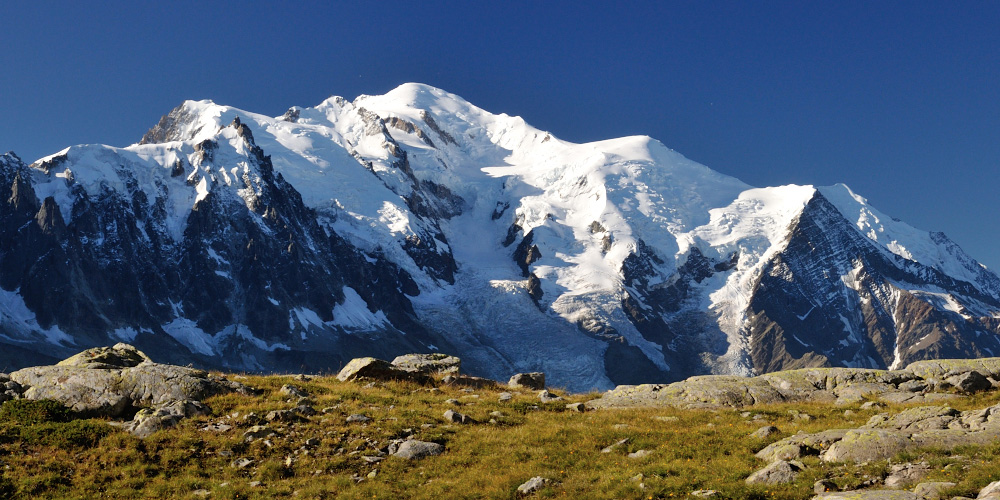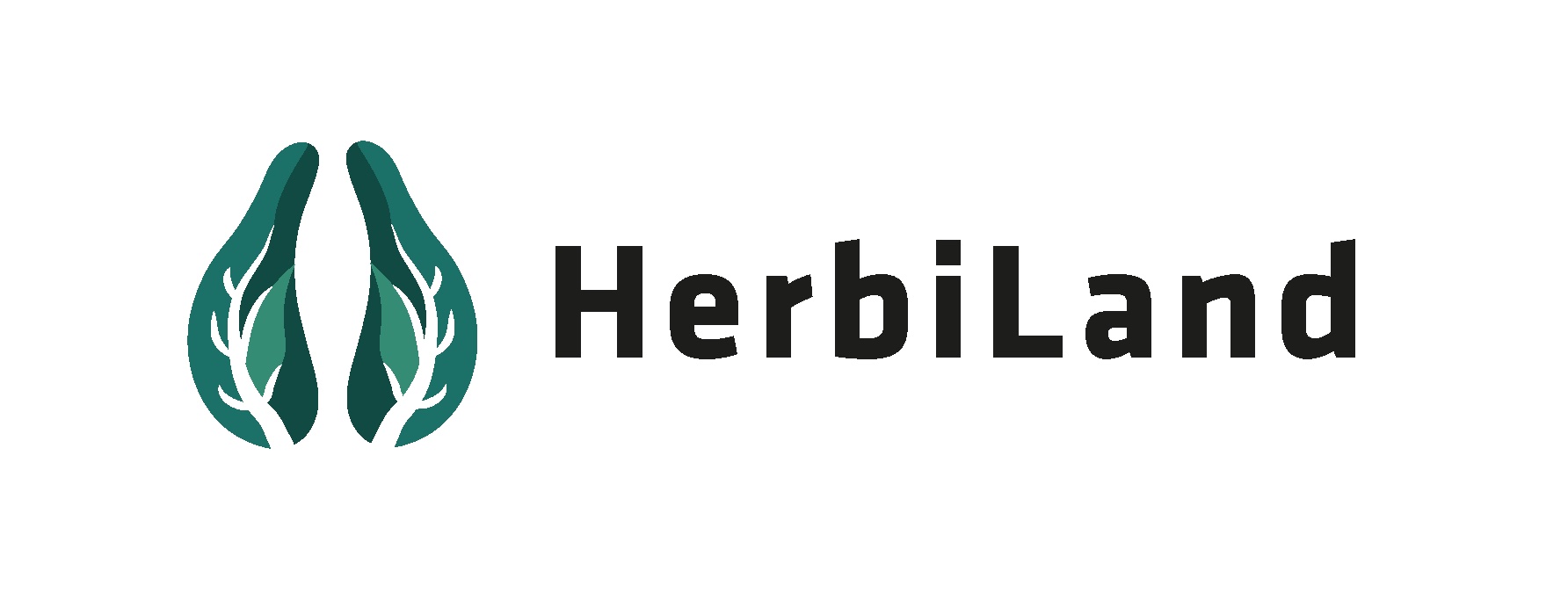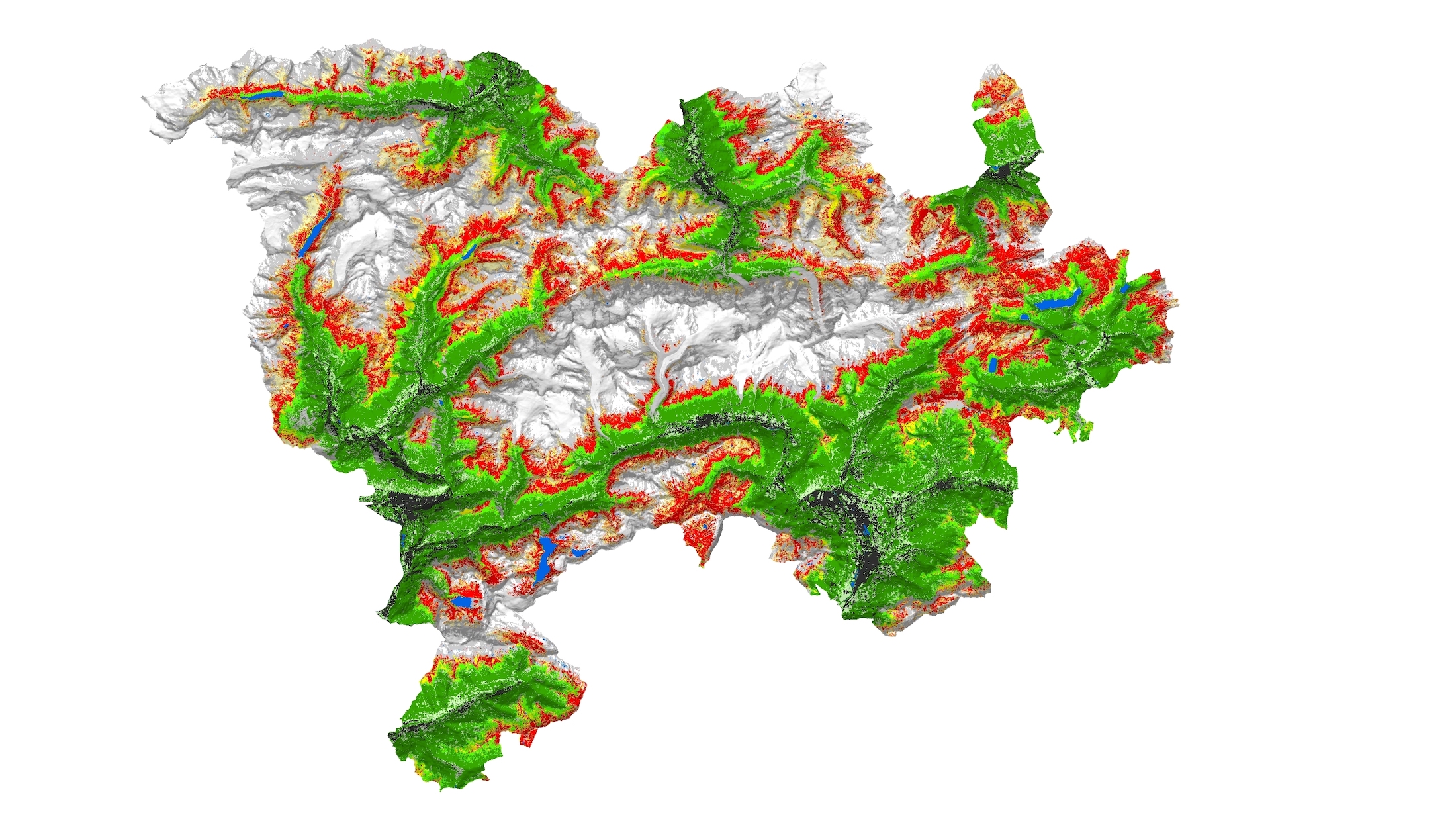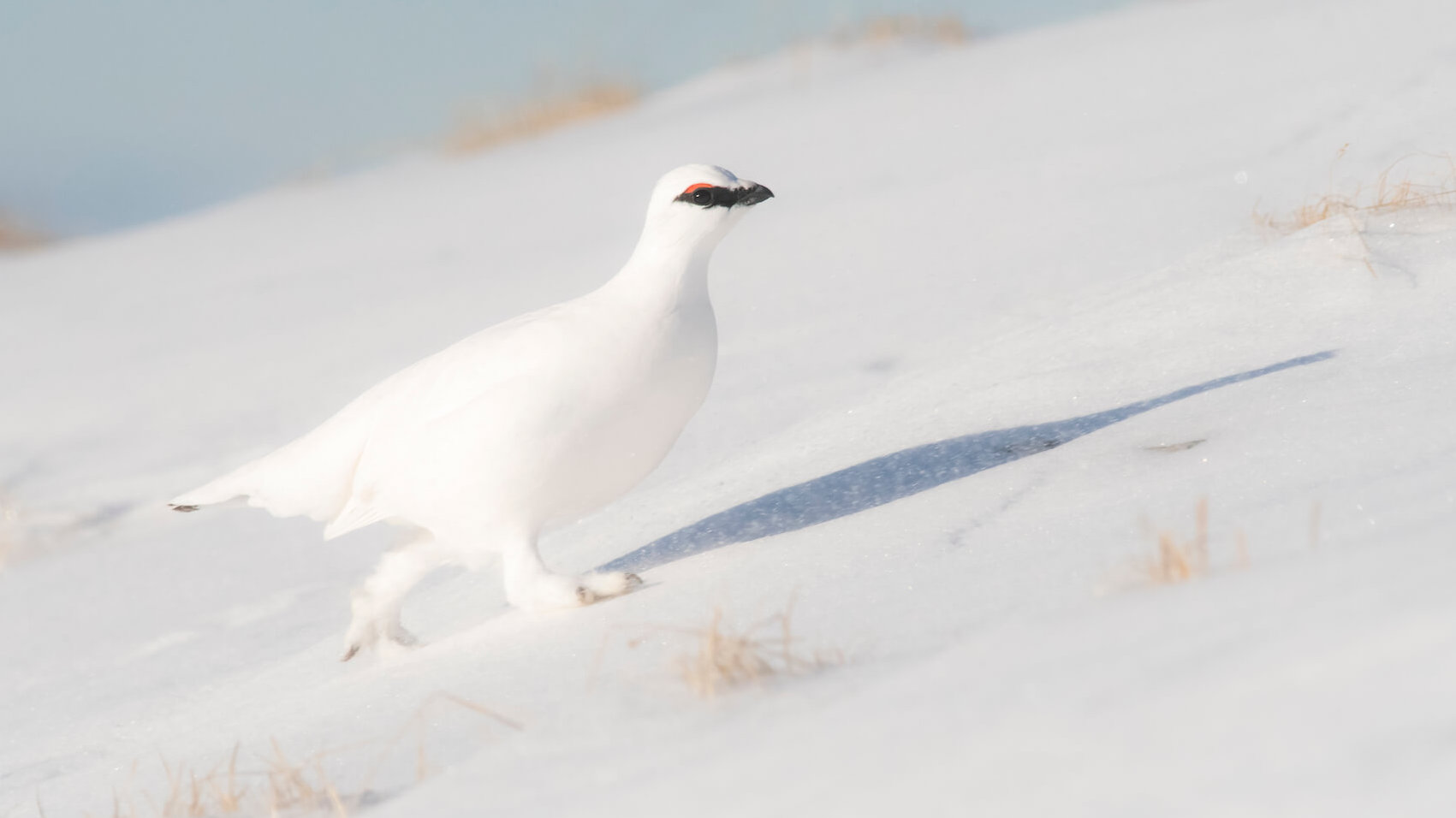
The Mont Blanc Massif is the subject of a wide variety of multidisciplinary scientific studies, all found on the Mont Blanc Atlas. © A. Delestrade

Phenology
The Phenoclim program seeks to measure and understand the impact of climatic changes on the phenology (seasonal rhythms) of different species found in mountain environments. In spring and fall, ten common tree and plant speicies as well as eleven bird species are monitored by CREA Mont-Blanc’s researchers and volunteers across the Alps.
Phenoclim is a participatory science program, and since 2004 has received contributions from over 5,000 citizen scientists, including several hundred who participate every year.
To learn more about the program, visit our Citizen Science page in English or Phenoclim.

Long-term monitoring of an entire massif
The goal of the Mont Blanc Atlas program is to create an interactive and participatory online laboratory, bringing together scientific data and results in ecology, climatology and glaciology. Created thanks to the expertise of researchers and help of volunteers, the studies found on the Mont Blanc Atlas allow for long-term monitoring of the evolution of ecosystems in this emblematic mountain range. By making these resources available to the public, they can act as a tool for creating land management strategies and for raising awareness in the general public.
Phenological protocols
Green up monitoring (automated with cameras and satellites)
Coal tit reproduction monitoring
Common frog reproduction monitoring
Protocols for monitoring the evolution of alpine species
A variety of different protocols have been put in place in order to evaluate the distribution and population dynamics of plant and animal species in the Mont Blanc massif. Using the data collected, researchers are able to model the influence of environmental change on ecosystems in the future.
The Mont Blanc Atlas is a website not only dedicated to allowing users to explore the data and results from these protocols, but also to creating a space for discovering information from a variety of different disciplines including ecology, climatology and glaciology. A variety of “live” applications, a selection of interactive visuals and explanatory articles allow users to achieve a deeper understanding of current environmental issues.


HerbiLand
Pressures from human activities (agriculture, recreation, etc.) in natural areas can modify the distribution and dynamics of wild animal populations, as can biophysical factors (climate, resource availability, habitat, competition between wild species, predation, etc.). Today, we need to understand these complex dynamics in a systemic way, in order to implement management policies that will enable humans and wildlife to share space and adapt to each other.
Population dynamics of wild ungulates in supra-forest environments.
The HerbiLand project, financed by the European FEDER Massif Alpes 2021-2027 funds and co-financed by the Fondation Alpes Sauvages, aims to gain a better understanding of the interactions between three major factors: the evolution of wildlife, the evolution of natural environments, and local anthropic pressures, more specifically pastoralism and outdoor activities, in a more global context of climate change.

Orion
The ORION project aims to make indicators derived from satellite images available to biodiversity managers in an emblematic mountain area: the Chamonix valley. Sentinel-2 images, botanical surveys and photo traps are combined to assess the impact of shrub expansion on plant diversity and large mountain herbivores.
Rendre disponible des indicateurs issus d’images satellites aux gestionnaires de la biodiversité afin de gérer l’expansion des landes sur le territoire
To learn more about this project Spage for Climate Observatory page

White Species
imate change is more evident in the Alps than elsewhere. The species that live there are seeing their environment change at high speed, and are undergoing profound transformations. The Espèces arctico-alpines project, financed by the European FEDER-POIA funds, focuses on the rock ptarmigan and the mountain hare, two species that are particularly sensitive to rapid changes in their environment.
Arctic-alpine species in the face of climate change
To learn more about this project White Species : better understand them to better protect them

Climatology
Climatology is a fundamental underlying discipline behind all of CREA Mont-Blanc’s various research programs. With the goal of precisely monitoring climate change, CREA Mont-Blanc has installed over 60 automated temperature monitoring stations across the Alps. This unique monitoring network allows researchers to compare climate data (temperature and snowpack) with flora and fauna observation data.
CREA Mont-Blanc’s temperature monitoring stations were designed through a collaboration with the Charles Poncet Tech high school in Cluses, and engineers from SOMFY.
To learn more about our temperature monitoring stations, you can consult the technical specifications sheet, and explore our online interactives:
- Temperature monitoring (from automated temperature stations): Climat en live.
- Snowpack monitoring (from automated stations and volunteer observations): Snowpack.
To learn about our research collaborations, visit our collaborations page.
